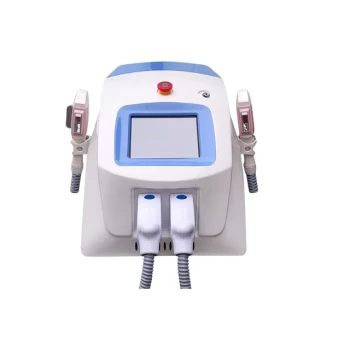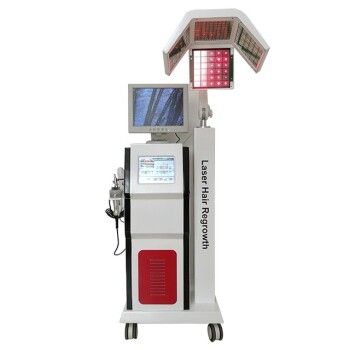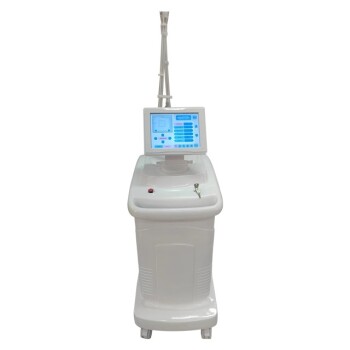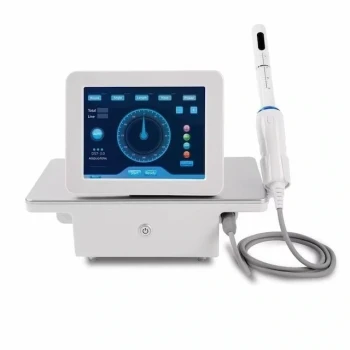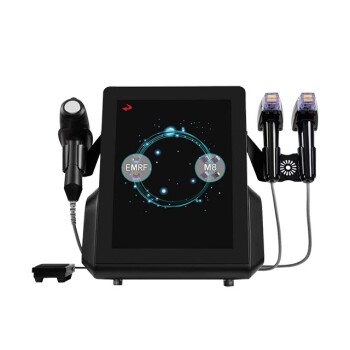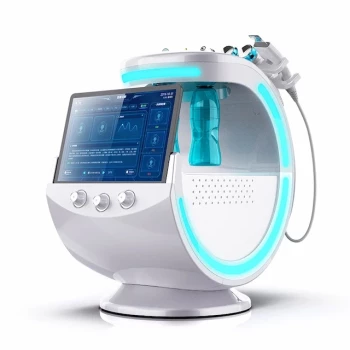At its core, the term SHR doesn't represent a new type of light technology, but rather a different method of delivering it. Super Hair Removal (SHR) is a technique that can be applied to both laser and IPL devices. It uses lower energy levels at a much higher frequency, gradually heating the hair follicle instead of delivering a single, high-intensity blast.
The fundamental difference isn't between two competing technologies, but between two delivery methods: the high-intensity "stamping" of traditional laser/IPL versus the low-intensity, high-repetition "in-motion" technique of SHR. Your choice depends on your priorities regarding comfort, skin type, and treatment speed.

Deconstructing the Terminology: Laser vs. SHR
To make an informed decision, you must first understand the tools and the techniques. The confusion between SHR and laser arises because clinics often market the method (SHR) as if it were a unique technology.
The Traditional "Stamping" Method
Most traditional laser and Intense Pulsed Light (IPL) treatments use a "stamping" method. The handpiece is placed on a small area of skin, a single, high-energy pulse of light is delivered, and then the handpiece is moved to the next adjacent spot.
This method works by delivering a massive amount of energy in a fraction of a second. This energy is absorbed by the melanin (pigment) in the hair, creating a thermal shock that destroys the follicle.
The SHR "In-Motion" Method
SHR, or Super Hair Removal, flips this approach on its head. Instead of one high-energy pulse, it delivers multiple, lower-energy pulses while the handpiece is constantly moving over the skin.
This "in-motion" technique gradually heats the dermis to a temperature that effectively damages the hair follicles and the surrounding stem cells responsible for regrowth. The energy is cumulative, not instantaneous.
Comparing the Experience and Efficacy
The difference in how energy is delivered has significant implications for everything from pain and safety to the speed of your appointment.
Pain and Comfort
This is the most significant difference for many people. The high-energy blast of traditional laser is often described as a sharp "rubber band snap."
SHR's gradual heating is far more comfortable, typically described as a warm, tingling sensation, much like a hot stone massage. This makes it a preferred option for sensitive areas or individuals with a low pain tolerance.
Speed and Coverage
For large areas like the back, chest, or legs, the SHR "in-motion" technique is significantly faster. The operator can glide the handpiece continuously over the treatment zone.
Traditional stamping is more deliberate and time-consuming, as each small section of skin must be treated individually before moving to the next.
How They Target the Follicle
Traditional methods rely almost entirely on the melanin in the hair shaft to absorb a single, intense blast of heat.
SHR also targets melanin, but as a secondary pathway. Its primary goal is to use that melanin as a conduit to slowly heat the entire follicle and the biological structures responsible for hair regeneration.
Understanding the Trade-offs and Risks
While often marketed as superior, SHR is not universally better; it represents a different set of trade-offs. Choosing correctly means understanding its limitations.
Suitability for Skin and Hair Types
Because traditional lasers use such high energy focused on melanin, they carry a higher risk of burns or pigmentation changes for individuals with darker skin tones (as the skin itself contains melanin).
SHR's lower-energy, cumulative approach is significantly safer for a wider range of skin types, including tanned and darker skin. By not relying on a single, high-peak energy pulse, the risk of damaging the surrounding skin is greatly reduced.
Number of Sessions Required
This is a critical trade-off. The powerful, high-energy pulses of a traditional laser can often achieve desired results in fewer sessions than SHR.
The gentler, cumulative heating of SHR may require more treatments to reach the same level of permanent hair reduction. The total number of sessions for both methods will always vary based on your hair growth cycle, hormones, and the area being treated.
The "Gentle" Misconception
While SHR is more comfortable, it is not without risk. It is still a powerful procedure that uses heat to damage biological tissue. An inexperienced or poorly trained technician can still cause burns by holding the handpiece in one spot for too long or using improper settings.
How to Choose the Right Method for You
Your decision should be based on a clear assessment of your personal goals and physical characteristics, not on marketing claims alone.
- If your primary focus is comfort and you have a low pain tolerance: SHR is the clear winner due to its gentle, gradual heating method.
- If you have a darker skin tone or are frequently tanned: SHR offers a significantly better safety profile, reducing the risk of burns and hyperpigmentation.
- If you are treating a large area like your back or legs: The "in-motion" technique of SHR will make your appointments much faster and more comfortable.
- If your primary goal is the fastest results (in the fewest sessions): A traditional high-powered laser may be more effective, but only if you have the appropriate skin and hair type for it to be used safely at high settings.
Ultimately, understanding the difference between the method and the technology empowers you to ask the right questions and select a treatment based on objective factors, ensuring a safer and more effective outcome.
Summary Table:
| Feature | Traditional Laser/IPL (Stamping) | SHR (In-Motion) |
|---|---|---|
| Sensation | Sharp, like a rubber band snap | Warm, tingling sensation |
| Best For Skin Types | Lighter skin tones | All skin tones, including tanned & darker skin |
| Treatment Speed | Slower, deliberate | Faster for large areas |
| Primary Sessions Needed | Often fewer | May require more |
| Core Mechanism | Single, high-energy blast | Multiple, low-energy pulses (cumulative heat) |
Ready to offer your clients the most advanced and comfortable hair removal experience?
BELIS specializes in professional medical aesthetic equipment, including state-of-the-art SHR and laser systems. We help medical aesthetics clinics and premium beauty salons enhance their service offerings, improve client satisfaction, and grow their business.
Contact our experts today to find the perfect hair removal solution for your practice and clientele.
Visual Guide
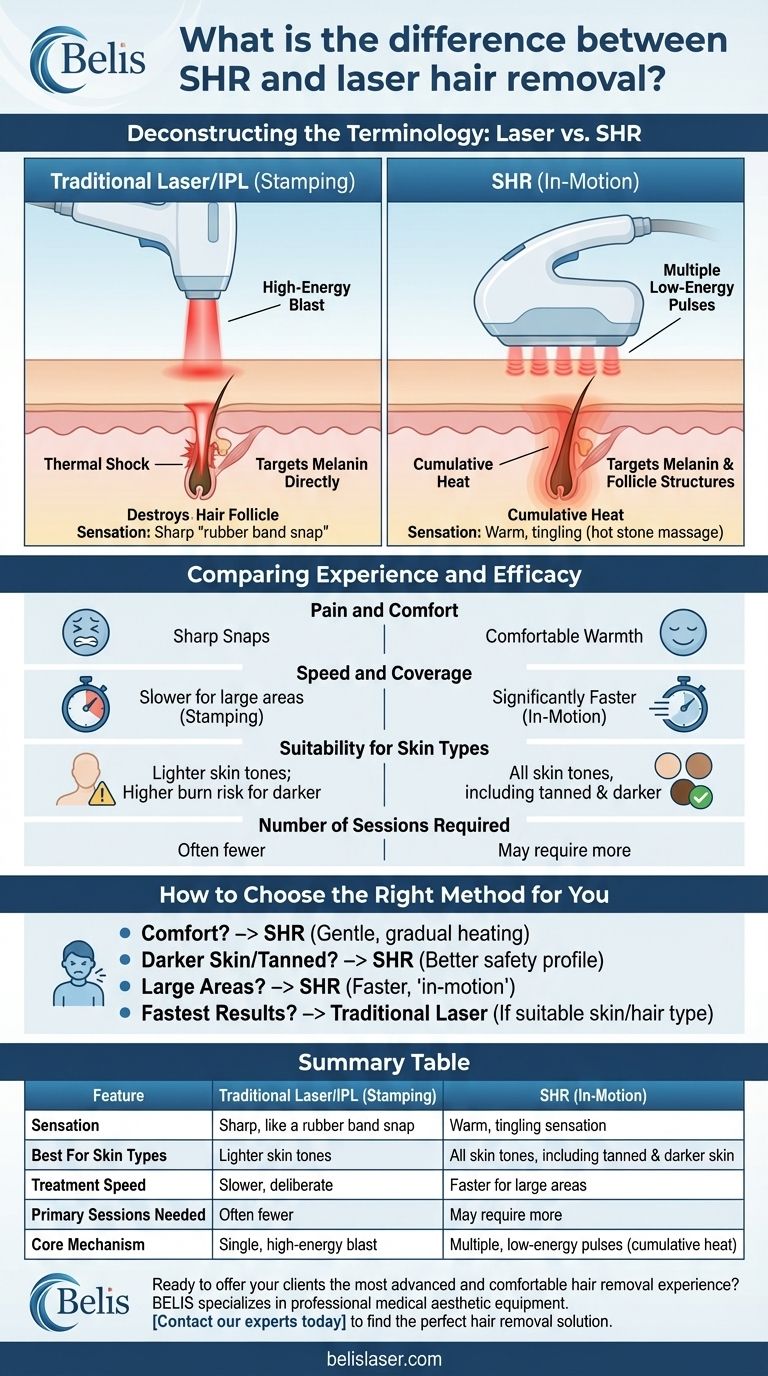
Related Products
- Clinic Diode Laser Hair Removal Machine with SHR and Trilaser Technology
- Diode Laser SHR Trilaser Hair Removal Machine for Clinic Use
- IPL SHR Hair Removal Machine for Permanent Hair Removal
- IPL SHR+Radio frecuency machine
- Clinic Use IPL and SHR Hair Removal Machine with Nd Yag Laser Tattoo Removal
People Also Ask
- How long does diode hair removal last? Achieve Long-Term Smoothness
- What is the No 1 laser hair removal machine? Find the Best Device for Your Skin & Hair
- What is better, an IPL or a diode laser? Choose the Right Tool for Your Aesthetic Goals
- How does diode laser hair removal work? The Science of Targeting Hair Follicles
- Which is safer, diode or IPL? Discover the Safer Choice for Hair Removal


